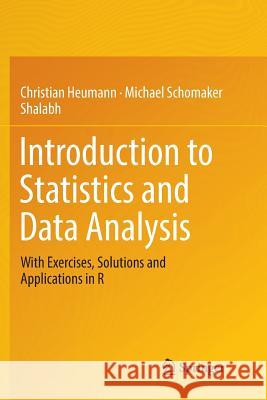Introduction to Statistics and Data Analysis: With Exercises, Solutions and Applications in R » książka
topmenu
Introduction to Statistics and Data Analysis: With Exercises, Solutions and Applications in R
ISBN-13: 9783319834566 / Angielski / Miękka / 2018 / 456 str.
Kategorie:
Kategorie BISAC:
Wydawca:
Springer
Język:
Angielski
ISBN-13:
9783319834566
Rok wydania:
2018
Wydanie:
Softcover Repri
Ilość stron:
456
Waga:
0.65 kg
Wymiary:
23.39 x 15.6 x 2.41
Oprawa:
Miękka
Wolumenów:
01
Dodatkowe informacje:
Wydanie ilustrowane











